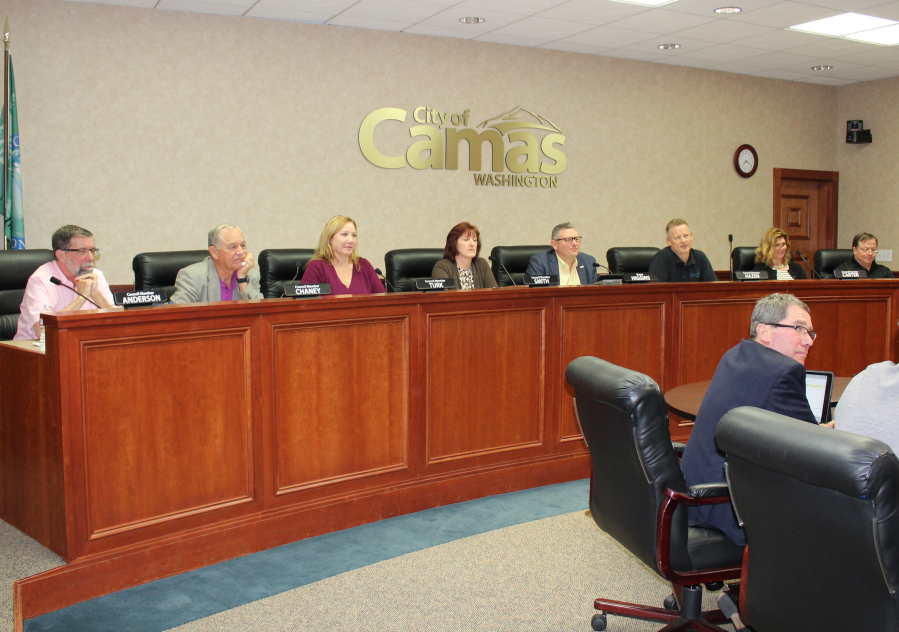Camas City Council members on Monday voted 5-2 to adopt a somewhat contentious set of salary scales for the city’s “non-represented” employees — those who are not part of a union or represented by a collective bargaining agreement.
Concerned that non-represented employees, including the city’s police chief, public works director, fire chief, finance director and library director, had already worked long enough without an updated salary schedule or cost-of-living increase, city leaders made the seven-tier salary scales retroactive to Aug. 1 of this year.
City councilors have grappled for months over issues related to salaries and benefits for the city’s employees, with several councilors questioning an independent review of city employee salaries conducted by the consulting group HR Answers, Inc., earlier this year.
On July 17, the council voted 6-1 to accept the compensation study report and allow city staff to use the research as a tool for negotiating with employee unions. Most councilors made it clear in July that their vote was not a blanket approval of the study’s findings, but rather an acceptance that the city had asked for a salary study and had received the consultants’ report.
Councilors Melissa Smith and Don Chaney have long said they had qualms with the consultant’s study, which included recommendations for increasing or decreasing current salary benchmarks for 68 city of Camas positions. The consultants based their recommendations on dozens of similar positions and wages in other cities and library systems, but some councilors — including Chaney, the city’s former police chief — said they weren’t comfortable with the wide geographical scope of the study, or with the fact that the consultants had also used private-industry data to come up with new salary ranges for public employees.




